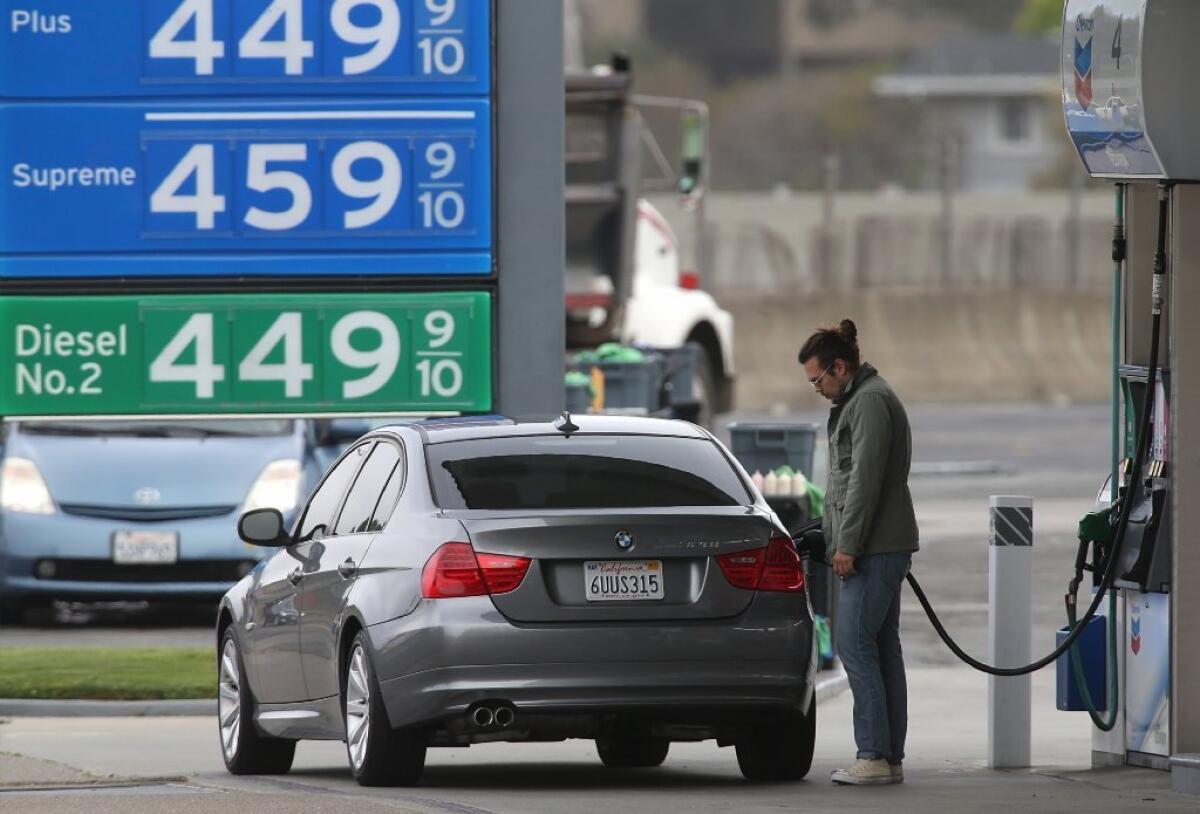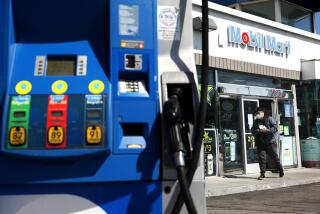Editorial: How California can best fight climate change

California’s landmark climate change law, AB 32, has created a promising cap-and-trade program for greenhouse gases that has put the state on track to meet its emissions goals for 2020, kick-started the state’s green technology industry and generated hundreds of millions of dollars for mass transit and other projects that will further reduce reliance on fossil fuels.
But now comes the harder part for many Californians: In 2015, AB 32 will begin to cover companies that produce transportation fuels, including gasoline. That means oil companies will begin paying for the greenhouse gases their products emit, a cost the oil companies say they will pass on to consumers. They say it will amount to an extra 15 cents a gallon.
Gas prices already have risen by close to 50 cents a gallon since the beginning of the year, for reasons that have nothing to do with AB 32. The prospect of adding 15 cents more — though it’s relatively minor compared with the overall price increase — is daunting to many drivers. Assemblyman Henry T. Perea (D-Fresno) has introduced a bill to delay the extension of the law to transportation fuels for three additional years.
That won’t do at all. California may be ahead of the rest of the nation in the crucial effort to stave off the worst of global warming, but recent reports have made it clear that the state must intensify its efforts if it is to meet its emissions goals for the decades beyond. Emissions from the transportation sector, which in California means mostly cars and trucks, are the single largest source of greenhouse gases, according to the state Air Resources Board.
The state must give drivers strong incentives to take fewer trips, carpool, use public transit and purchase electric or fuel-efficient vehicles. At the same time, state officials must remain sensitive to the effect a price increase will have on low-income and working-class Californians, especially those who commute long distances in areas where robust public transportation systems have not been built.
The best solution to this dilemma was proposed this year by Senate leader Darrell Steinberg: Rather than extending AB 32, impose a carbon tax on gasoline, at least for a transitional period. But make it revenue-neutral by giving the money back to taxpayers — and especially low-income taxpayers — through tax credits on the state’s personal income tax.
A carbon tax that pushes up gas prices would give all California drivers reason to be gas-thrifty. They could then decide whether to use their tax credit to offset the increased cost of buying gas or find ways to reduce gas purchases and use the credit for other purchases. Substantially larger tax credits would go to lower-income residents and perhaps to rural residents for whom public transit isn’t available. Some of the money could be set aside for rebates to residents who buy fuel-efficient cars, or to agricultural operations that switch to cleaner farm vehicles or methane-capture technologies.
British Columbia has a similar carbon tax. Economists say it has given the province the lowest income tax rates in Canada, contributing to a robust economy while substantially reducing reliance on fossil fuels.
Unfortunately, Steinberg backed away from that proposal in favor of a deal to use the cap-and-trade money for long-term projects to reduce carbon emissions, such as high-speed rail from Los Angeles to the Bay Area and affordable housing near public transit. Those are worthy projects, but they are not quick ways to reduce the consumption of fossil fuels.
In any case, there’s other cap-and-trade money to be used for those projects, though admittedly the income is in the hundreds of millions of dollars rather than billions. And besides, if the carbon tax is lifted after a transitional period during which Californians adapt to more fuel-thrifty ways, AB 32’s cap-and-trade provisions can then be extended to transportation fuels, and cap-and-trade money would again be available for other projects.
A carbon tax on gasoline and other transportation fuels that returns the money directly to taxpayers and helps them switch to more environment-friendly vehicles is a valid way to reduce emissions; it has the advantage of aiding the overall economy and making it easier for Californians to afford the transition to a less polluting future.
Follow the Opinion section on Twitter @latimesopinion
More to Read
A cure for the common opinion
Get thought-provoking perspectives with our weekly newsletter.
You may occasionally receive promotional content from the Los Angeles Times.






